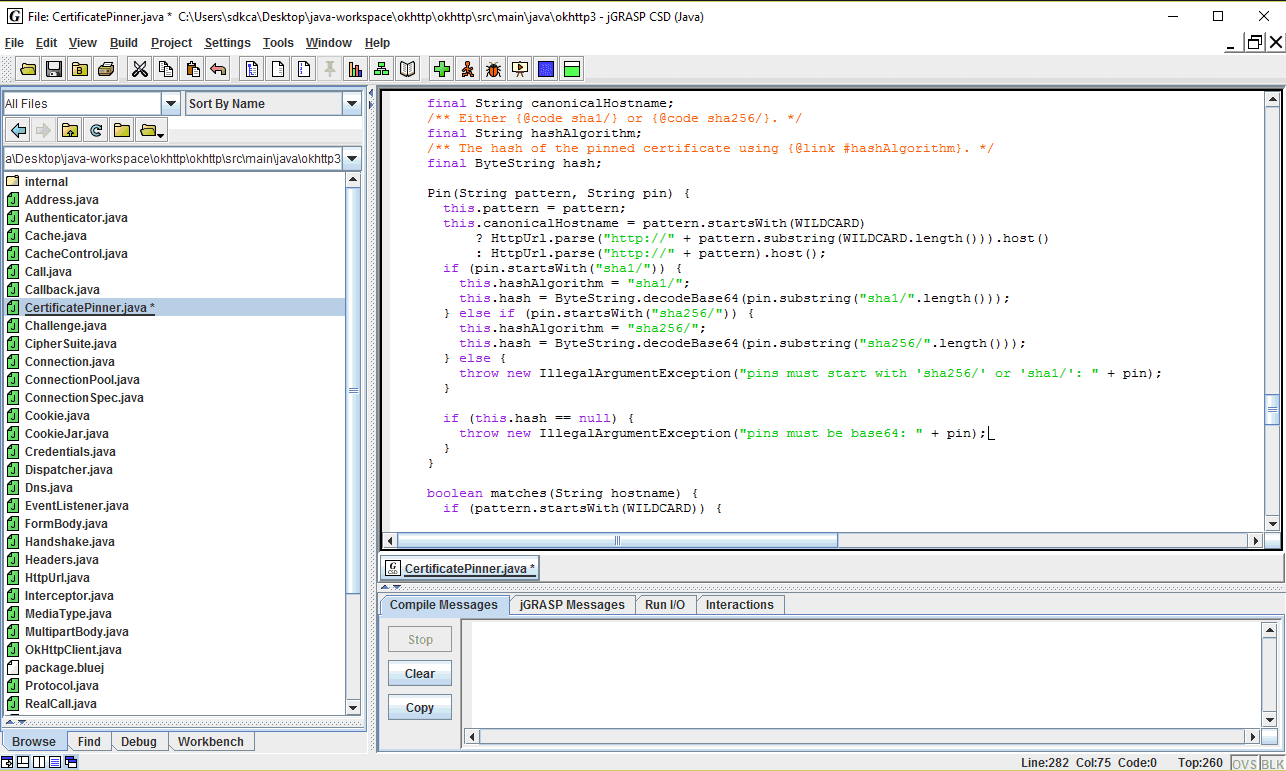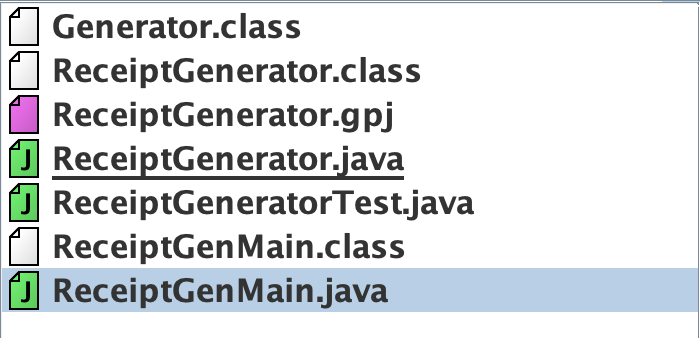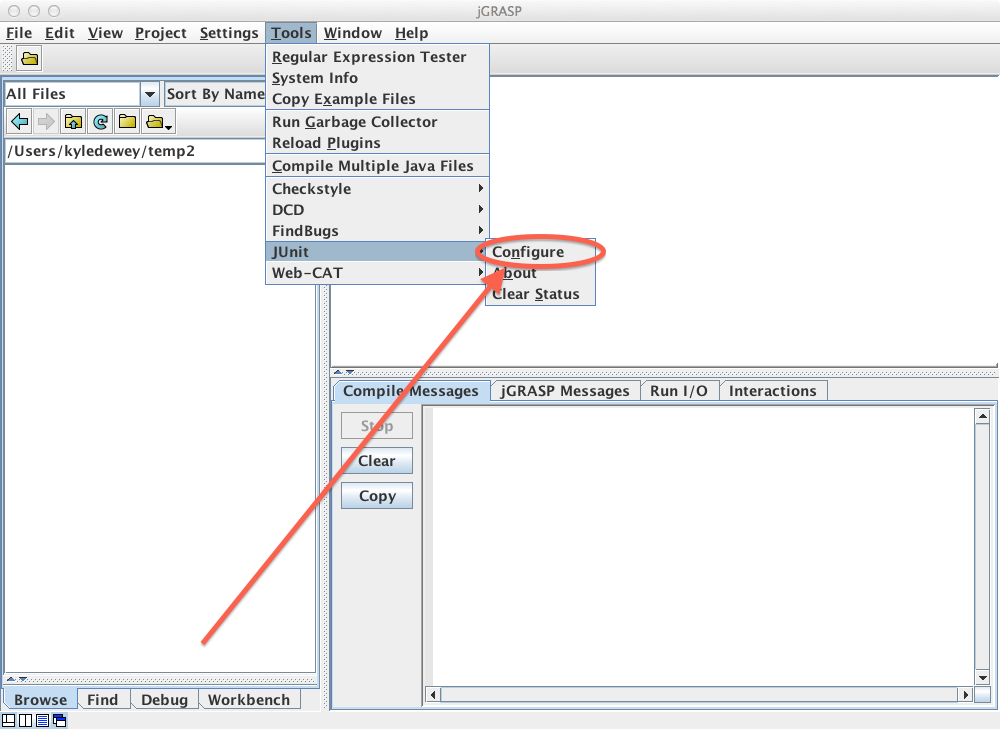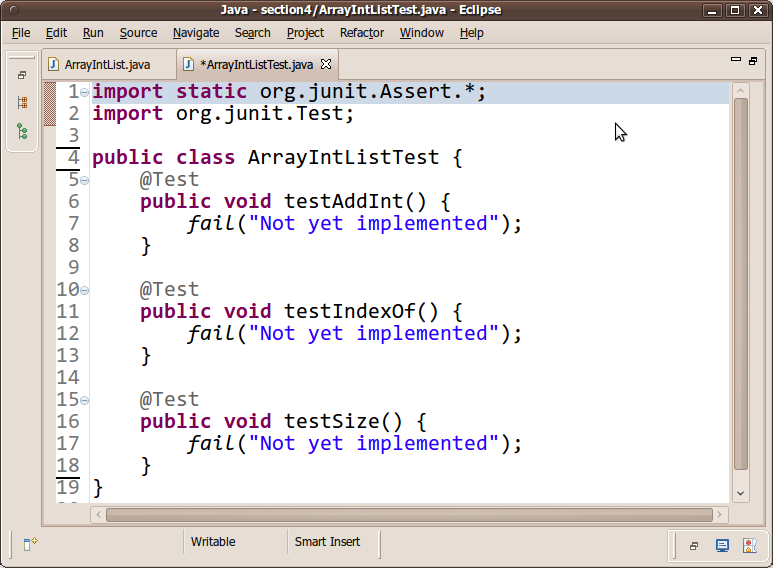
More details are in the comments of PerimeterCalculationMethod.java.Įxample output of the program is shown below, with user input shown in bold:ĭownload the DegreeConversionMethod.java file, and open it in jGrasp (or a text editor of your choice).
#Jgrasp junit code#
Unlike with previous labs, you may not modify the code in the main method. You'll need to implement the concatenate method, without modifying the main method. Step-by-Step Instructions Step 1: Edit PerimeterCalculationMethod.javaĭownload the PerimeterCalculationMethod.java file, and open it in jGrasp (or a text editor of your choice). Use JUnit to write and execute basic tests for methods.Define methods as necessary to make code compile and run.Monday, February 12 at 11:59 PM Goals for This Labīy the time you have completed this work, you should be able to:

We show some of the basics steps here, for more details follow the tutorial online.Lab 5: More Methods and an Introduction to Testing with JUnit Lab 5: More Methods and an Introduction to Testing with JUnit The interface of an earlier version of BlueJ but the steps are the same as the
#Jgrasp junit how to#
There isĪ tutorial online, available at, showing how to record and run test cases in BlueJ. As they become familiar with JUnit's terminology, they can write their own test cases in the source code editor window, much like they write plain Java code. The recording of the test methods allows the beginning student to capture testing expressions without having to know the syntax of JUnit. In BlueJ, you first create a test class, record your test cases (methods), and then execute either all of your test cases or individual test methods. If you have a recent version of BlueJ, you already have all you need to use JUnit. The current version of BlueJ (version 3.0.7), avialable at, includes support for testing directly integrated in the IDE. The JUnit home on SourceForge ( ) has several good sources for learning JUnit, including release notes, a Cookbook, Javadoc, and frequently asked questions.Īt the time of this writing, there are three main unit test frameworks for Java. Instructions for git are available on this page.

#Jgrasp junit zip#
You can download it in zip or tar format or even just clone the project using git. You can download JUnit from its home on the web ( ). Nevertheless, it is good to familiarize yourself with the online repository where JUnit lives and with the options for downloading JUnit directly. Since most IDEs include support for JUnit, the jar files for JUnit are already included in your setup.
#Jgrasp junit professional#
For more professional treatment of testing,Ĭheck the Reference section to see other material. Testing support that you can use in lectures, assignments or that your students To show you how to use testing in the classroom, and as such, we will focus on

On how to run tests from the command line (shell), just in case you prefer the

However, provides very different support for creating tests,Įxecuting tests, and managing your testing process. Versions of these systems come preconfigured with JUnit. You how to setup JUnit in Eclipse, BlueJ, NetBeans, and JGrasp. With your IDE of choice to have JUnit ready for use. In preparation for the workshop, we strongly recommend you configure your laptop


 0 kommentar(er)
0 kommentar(er)
